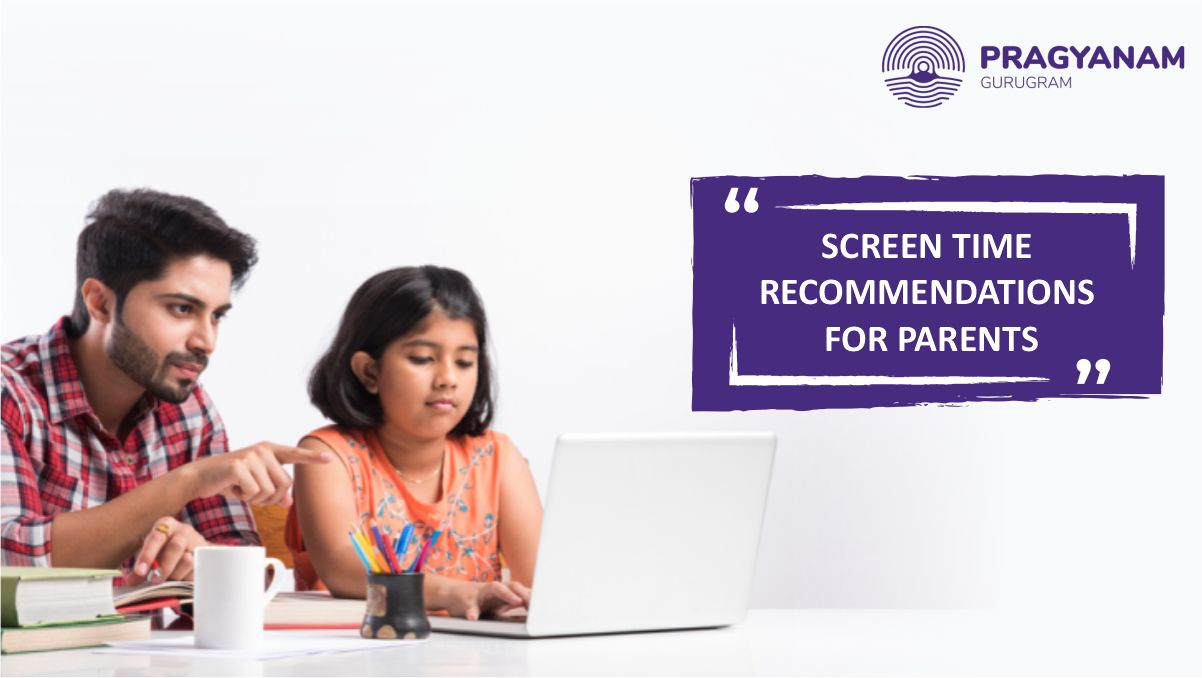‘Technology is a useful servant but a dangerous master.’
More than 70% of parents in today’s internet-driven world are somewhat concerned about the increased use of devices & smart gadgets used by their children. According to a UNICEF report, one in three online users present globally is under 18. This alarming figure is the reason why setting up reasonable boundaries around the use of technology is an integral part of modern parenting.
With the ease of accessibility to smartphones, TVs, iPads, and other devices around us, it may seem overwhelming as parents to decide how much time is ideal for your child’s screen usage. How long should the children watch TV? Should the children be texting or playing games all day? Will technology aid their studies? Will educational content available online create a difference in their studies? When to give your child his/her own personal device? These are some of the questions that may pester you as a parent, and it is important to seek answers to ensure your children make optimum use of technology & gadgets that positively impacts their overall development.
Table of Contents
How Does Excess of Screen Time Affect Children?
Cognitive, physical, social, emotional, and behavioral developments occur among children at a fast pace in young children, especially in their first three years of age. A child’s surrounding environment plays a critical role in his/her development as children learn by observing the activities of adults. However, a substantial amount of screen exposure can lead to developmental delays in them such as communication difficulties, impaired motor & emotional skills, language problems, etc.
Here are some negative effects of increased exposure to devices & smart gadgets among children:
● Mood & attention disorders
● Sleep issues
● Less physical activity
● Self-image and body-image issues
● Obesity & weight management issues
● Poor eating habits
● Having a limited scope of interests
● Lack of social skills
● Anxiety & depression
● Physical health problems like chronic neck & back pain, vision issues, etc
In other words, a child who is exposed to the virtual world for a longer period of time spends less time playing, observing, or interacting with friends and family in the real world. This can have a significant impact on the child’s overall maturation and growth. World Health Organization (WHO) guidelines recommendation states that children up to 2 years of age should have zero screen time and children between 2-4 years of age should have no more than 1 hour of screen time.
How to set & maintain healthy screen usage boundaries & limits for children
Are you looking for a way out to start setting time limits for your child’s screen usage? The first step that you should do as a parent is to initiate a dialogue with your children on how they feel about social media and the online world. Once you listen to their perspective, you can help them understand how it can potentially harm them in many ways and how to balance the use of technology while staying connected to the real world. The best practice is to set rules in your family for all family members to not use devices at a certain hour of a period of time on a daily basis and fix family hours.
Here are a set of additional guidelines & general rules you can implement to control screen time for your children:
● Close all apps & devices at least 30-40 minutes before bedtime
● Involve the children in house chores & other activities
● Use parental controls wherever needed to limit the screen time of younger children
● For children in their teenage years & older, you can discuss and set their own boundaries for a healthy screen time
● Restrict devices at the dining table while having meals for the entire family
● Tell them the good & bad impacts of technology on their physical & mental health
● Plan family outings & games for the children
● Go to markets once in a while for shopping house essentials like groceries
● Encourage your child to learn a new skill or develop a new hobby like singing, dancing, reading, playing a sport, etc
While you may follow these tips, you also need to realize that a major part of socializing is done online these days. This, and also the increased use of social media and the urge to seek validation online by modern children.
It’s also important to understand how much socializing is done online nowadays. As children get older, they’ll need to know how to navigate the social norms that their generation is creating, many of which depend on social media and the virtual world. As your children grow up, they will be required to develop an understanding of navigating the social norms of their generation towards a healthier approach of leveraging devices to lead a healthy & active life.

So, what’s the ideal screen time for children?
As easy as the question may sound, there is no one correct answer for the same! The amount and type of screen time that a child must be allowed to depend on several factors and the surrounding environment the child is being raised in. And while it is undeniable that combatting excessive screen exposure for children is critical for their overall growth, we need to bring the children in the family on the same page with the adults to set healthy rules within the family for limiting screen time. Nevertheless, we must also acknowledge the positive side of technology and make the most of it to aid optimum growth for children. If used wisely, you can reap several benefits from digital media for your child. Having a certain amount of screen time as part of the daily activities might be okay but make sure it does not become the only activity for the children.

At Pragyanam School, a child’s holistic development is a critical part of our core mission. As the best school in Gurgaon, we focus on both the curriculum and curricular activities for children to fuel their learning and provide them ample opportunities to put their knowledge to good use, develop new skills & interests, and improve their social as well as organizational skills for their all-round growth. Creating student-friendly classroom environments is paramount to us to meet the diverse needs of our students and to provide adequate support to each student in the best possible way. An ideal world for children is one where they have the freedom to share their thoughts, adapt to healthier ways of living, and strike the right balance between the digital & the real world which should be our primary focus as parents, not just one but every single day!






